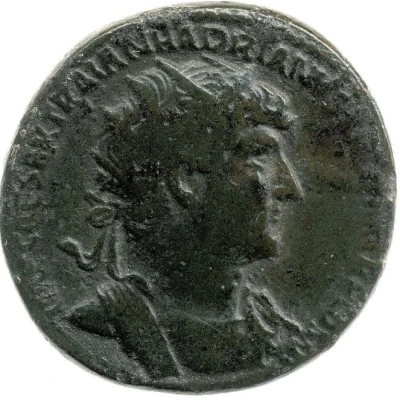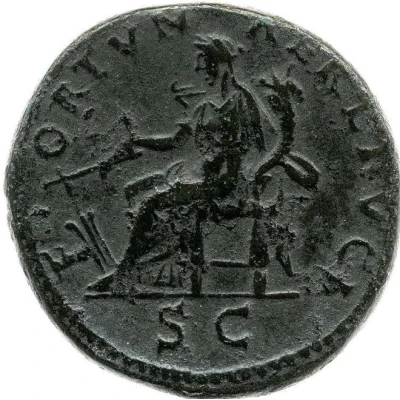


© British Museum
Dupondius - Hadrian FORTVNAE REDVCI S C; Fortuna
| Orichalcum | 12.5 g | 27 mm |
| Issuer | Rome › Roman Empire (27 BC - 395 AD) |
|---|---|
| Emperor | Hadrian (Publius Aelius Hadrianus) (117-138) |
| Type | Standard circulation coin |
| Years | 121-123 |
| Value | 1 Dupondius = ⅛ Denarius |
| Currency | Denarius, Reform of Augustus (27 BC – AD 215) |
| Composition | Orichalcum |
| Weight | 12.5 g |
| Diameter | 27 mm |
| Shape | Round (irregular) |
| Technique | Hammered |
| Demonetized | Yes |
| Updated | 2024-10-06 |
| Numista | N#255167 |
|---|---|
| Rarity index | 97% |
Reverse
Fortuna, seated left, holding rudder and cornucopia.
Script: Latin
Lettering:
FORTVNAE REDVCI
S C
Translation:
Fortunae Reduci. Senatus Consultum.
To returning fortune. Decree of the senate.
Comment
Source: Online Coins of the Roman Empire (OCRE)Interesting fact
The Dupondius coin featuring Hadrian (FORTVNAE REDVCI S C; Fortuna) from Rome, Roman Empire (27 BC - 395 AD) made of Orichalcum, weighing 12.5g, is interesting because it showcases the Roman Empire's advanced metallurgical skills. Orichalcum, an alloy of copper and zinc, was a valuable and durable material used in the production of coins during that time. The fact that this coin has survived for centuries and is still in circulation among collectors today, is a testament to the Empire's engineering prowess.

